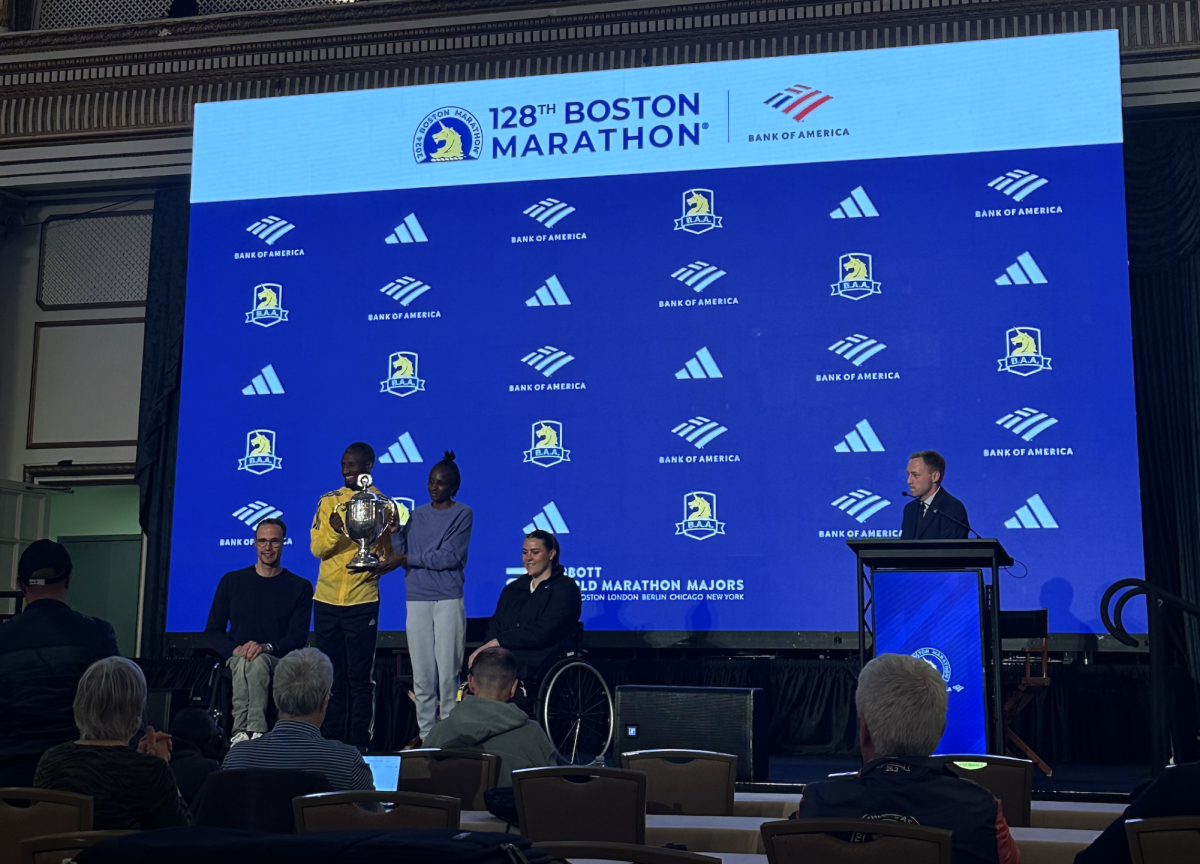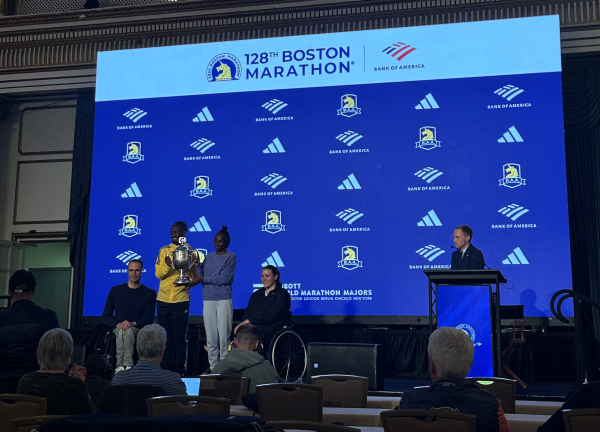TikTok influences communication, creates generational divide
TikTok trends influence Generation Z communication. This creates barriers for less technology-savvy age cohorts.
March 9, 2022
As is the case for many members of Generation Z, for one first-year at Northeastern the line between online and real life is blurred. Celia Middleton, a combined psychology and health sciences major, said she often finds herself doing dances and making verbal references to videos she’s seen on TikTok with her friends, a sign of social media influencing her everyday life.
For Middleton’s age cohort, social media platforms like TikTok, an app for sharing short videos, have created an intergenerational divide from others that aren’t in tune with the same internet culture. Whether through internet slang, online references or trends, social media has the capacity to influence how people within and across generations interact with one another.
“From watching dances on TikTok, I just did the Renegade without even thinking about it, with friends or in the hallway at school,” Middleton said. “It went from being a part of my online life into my real life without me even being conscious about it.”
TikTok is full of clips of people dancing, lip-syncing and performing comedy skits made by creators on TikTok, and they are often based on songs such as “Renegade,” “Fancy Like” and “Up.”
“Some people adapt to slang and catchphrases and embed it into their normal speech. I think it is strange, but if I get the reference I think it is funny,” said Liam Halcomb, a first-year student in the Northeastern Explore Program.
Social media influencing communication is nothing new. Until the debut of TikTok in 2016, Vine, a similar video-sharing app, was one of the most popular social media platforms with 200 million active monthly users. Similar to TikTok, Vine generated a slew of catchphrases that became a part of young people’s vernacular. For example, “do it for the vine,” became a commonplace phrase that encouraged people to do humorous, bold or even dangerous acts for the sake of online attention.
“I remember when Vine was the big thing, and I would watch and share videos with my friends,” Halcomb said.
When Vine shut down in 2016, TikTok entered the marketplace in the same year to fill the void it left behind.
As innocent as it may seem to scroll endlessly through TikTok and incorporate the language it fosters, there are negative consequences to using the app. One implication is that it can separate young adults from people in older generations who may spend less time on social media and, as a result, often struggle to understand each new meme, song or joke.
After the start of the pandemic, TikTok saw an 180% growth in users ages 15 to 25 in 2020. Parents who don’t frequent the app lack exposure to the popular slang terms that gain traction on the app. And as a result, they may not understand the niche and referential language used by their children who, aware of this dissonance of communication, tend to talk to their parents differently than they do to their social-media-savvy peers.
“There is a disconnect between our generation and older generations because parents aren’t going to waste their time learning different catch phrases and think TikTok is purposeless when TikTok phrases have made an influence on most kids’ language now a days,” said Vaughn Montoya, a first-year neuroscience major.
Social media is catered toward a younger audience, often sprinkled with attractive visuals, bright colors and exciting music. But Meryl Alper, an associate professor in communications studies, explained that all hope is not lost, and this doesn’t mean adults can’t learn how to use the medium and adopt the communication style.
“It is important to break free of the mindset that adults are too old to learn about what young people do online, as well as the idea that young people are self-sufficient and do not need any help to take advantage of all the possible benefits of the internet,” Alper said.
Alper explained that communication through cell phones and other devices affects younger generations’ communication style greatly. The internet and personal mobile devices make it possible for users to collaborate and coordinate with one another.
“There are more ways to communicate via social media, messaging and other digital technologies that can make life both easier and more complicated, including within and across all age groups,” Alper said.
TikTok continues to thrive and influence younger generations with slang, phrases and trends, but this does not mean older generations should avoid the platform. Advances in technology are a way for people across generations to be connected, not divided.
“Older generations think TikTok is a waste of time,” Montoya said. “But I think we can convince them otherwise and have them be a part of TikTok.”


















